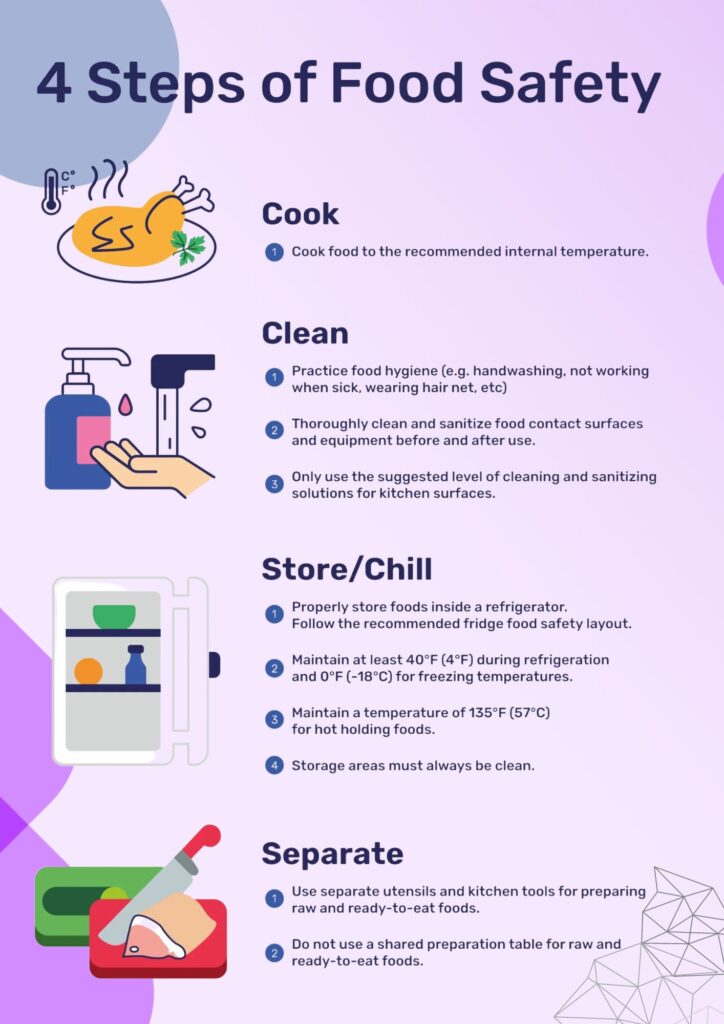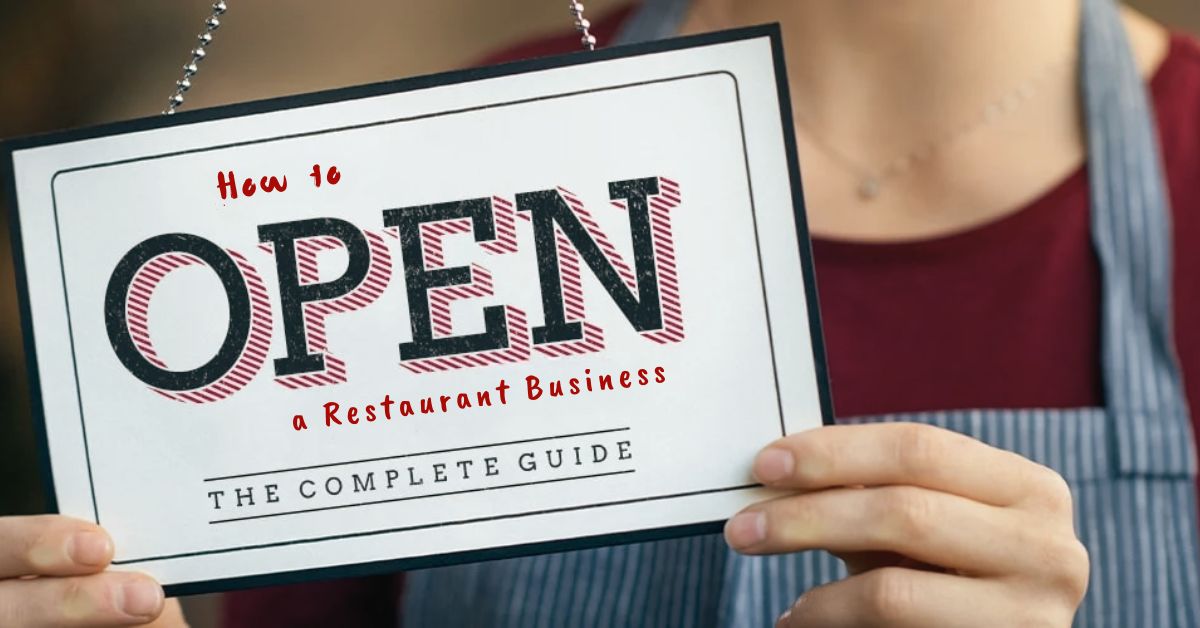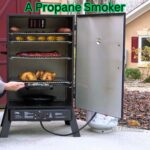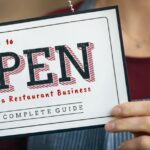As an Amazon Associate, I earn from qualifying purchases.
Discover essential tips to open a restaurant business, from food handling to equipment setup. Start your culinary journey today!
Research and Concept Development
To Open a Restaurant Business Food Handling and Equipment business is an exciting venture, but it requires meticulous planning and attention to detail. Before you dive into the world of food and hospitality, it’s crucial to conduct thorough research and develop a clear concept. By understanding your target market, identifying competitors, and deciding on the cuisine and dining experience you want to offer, you can set yourself up for success. Researching food handling requirements and equipment needs specific to your concept is essential for compliance with regulations and smooth operations. So, roll up your sleeves and get ready to delve into the fascinating world of restaurant research and concept development.
Location and Layout Design
Choosing the Right Location
Selecting the perfect location to open a restaurant business is crucial for attracting customers and ensuring its success. Consider factors such as visibility, accessibility, parking availability, and proximity to your target market. A strategic location can drive foot traffic and boost your restaurant’s visibility in the competitive dining scene. Think about the atmosphere you want to create and how the location can enhance the overall dining experience for your customers.
Designing an Efficient Layout
Once you’ve secured a location, the next step is to design an efficient layout for your restaurant. A well-thought-out layout can streamline food handling processes and optimize the placement of equipment. Separate food preparation areas from dining spaces to maintain hygiene standards. Allocate space for storage, refrigeration units, cooking equipment, and dishwashing stations. A functional layout enhances workflow efficiency and contributes to a seamless dining experience for your customers.
Ensuring Workflow Efficiency
Consider how the layout of your restaurant can facilitate smooth workflow and enhance staff productivity. Organize workstations logically to minimize unnecessary movements and optimize operational efficiency. By strategically placing equipment and workstations, you can reduce wait times, improve service quality, and create a positive dining environment. A well-designed layout contributes to a cohesive team dynamic and ensures that food-handling processes are executed seamlessly.
Balancing Aesthetics and Functionality
While designing the layout of your restaurant, strike a balance between aesthetics and functionality. Create a welcoming ambiance that reflects your restaurant’s concept and brand identity. Incorporate elements that enhance the dining experience, such as comfortable seating arrangements, ambient lighting, and visually appealing decor. At the same time, prioritize functionality by ensuring that the layout supports efficient food handling practices and equipment placement. A harmonious blend of aesthetics and functionality sets the stage for a memorable dining experience for your customers.
Permits and Licenses
Before you can start serving up delicious dishes in your restaurant, you’ll need to navigate the world of permits and licenses. These crucial documents are your ticket to legally operating your establishment and ensuring compliance with food handling regulations. Make sure to dot your i’s and cross your t’s by obtaining health permits, liquor licenses, food handling permits, and zoning permits. Each permit plays a vital role in upholding the safety and well-being of your customers.
As you embark on the journey of acquiring permits and licenses, remember that these documents are not just pieces of paper; they signify your commitment to running a safe and reputable establishment. Health permits are your key to passing inspections and demonstrating your dedication to food safety. Liquor licenses allow you to enhance the dining experience for your customers by offering a selection of beverages. Don’t overlook the importance of zoning permits, as they ensure your restaurant is located in an area suitable for your business operations.
Compliance with food handling and equipment regulations will be closely scrutinized during the permitting process. Take the time to familiarize yourself with the requirements and guidelines to streamline the application process. By obtaining the necessary permits and licenses, you’re not only setting yourself up for success but also laying the foundation for a thriving restaurant business that prioritizes safety and quality.
Menu Development
When it comes to menu development for your restaurant business, the key is to create a menu that not only resonates with your target market but also prioritizes food safety. Start by aligning your menu with your chosen concept and demographic. Consider offering a variety of dishes that cater to different tastes and dietary preferences while ensuring they are safe for consumption. This might involve incorporating allergen information, proper cooking temperatures, and responsibly sourced ingredients into your menu items.
To ensure the success of your menu, it’s important to strike a balance between creativity and practicality. While you want your dishes to be innovative and appealing to customers, it’s equally crucial to consider the feasibility of preparing them in your kitchen. Think about the equipment you have and how it can support the dishes you plan to offer. Additionally, make sure to factor in the cooking times and complexities of each dish to streamline operations and maintain food safety standards.
Menu development also involves pricing your dishes appropriately to cover costs and generate profit. Conduct a cost analysis to determine the expenses of ingredients, labor, and overhead, and set prices that reflect the value of your offerings. Keep in mind that pricing too high may alienate customers, while pricing too low could compromise the quality of your ingredients and overall dining experience. Remember, a well-thought-out menu not only showcases your culinary skills but also contributes to the overall success and reputation of your restaurant.
Lastly, don’t forget to regularly review and update your menu to keep it fresh and exciting for your customers. Consider seasonal ingredients, trends in the culinary world, and feedback from diners to refine and evolve your offerings. By staying attentive to the changing preferences of your customers and the market, you can continue to attract and retain a loyal following for your restaurant business.
Equipment Sourcing and Installation
When it comes to opening a restaurant business, choosing the right equipment is crucial for ensuring smooth operations and maintaining food safety standards. Your equipment needs may vary depending on the type of cuisine you plan to offer and the scale of your operations. Common kitchen equipment includes refrigeration units, cooking appliances like ovens and grills, food preparation stations, dishwashing equipment, and storage units. It’s essential to source your equipment from reputable suppliers that meet industry regulations and standards.
Proper installation of your equipment is key to ensuring optimal performance and longevity. Once you’ve selected the right equipment for your restaurant, make sure it is installed correctly to avoid any issues down the line. A well-organized kitchen with efficiently placed equipment can streamline your food handling processes and improve overall workflow. Regular maintenance of your equipment is also crucial to prevent breakdowns and ensure everything is running smoothly.
Investing in high-quality equipment may require a significant initial outlay, but it’s a worthwhile investment in the long run. Reliable equipment can help you deliver consistent quality in your dishes, enhance your kitchen efficiency, and reduce the risk of food safety incidents. Remember to consider factors like energy efficiency and durability when selecting your equipment to make the most of your investment. By prioritizing the sourcing, installation, and maintenance of your equipment, you’re setting your restaurant up for success in delivering a top-notch dining experience to your customers.
Staffing and Training
Hiring the Right Team
Staffing your restaurant with the right team is crucial for success. Look for individuals who are passionate about food, customer service, and teamwork. Hiring staff members who align with your restaurant’s values and vision will contribute to a positive work environment and enhance the overall dining experience for your customers.
Training for Excellence
Once you’ve assembled your team, it’s essential to provide thorough training on food handling practices, hygiene standards, and customer service expectations. Investing time and resources in training will ensure that your staff members are equipped with the knowledge and skills needed to deliver exceptional service and maintain food safety protocols.
Emphasizing Food Safety
Emphasizing the importance of food safety during training sessions is non-negotiable. Staff members should understand the significance of proper food handling, cross-contamination prevention, and safe cooking temperatures. By instilling a culture of food safety within your team, you can uphold high standards and prioritize the well-being of your customers.
Ongoing Education and Updates
Food safety regulations and best practices evolve, so it’s essential to provide ongoing education and updates to your staff. Regular training sessions, workshops, and resources will ensure that your team members stay informed about the latest guidelines and maintain compliance with food safety standards. By prioritizing continuous education, you demonstrate your commitment to excellence and professionalism.
Building a Strong Team Culture
In addition to technical skills, fostering a strong team culture based on respect, communication, and collaboration is key. Encourage open dialogue, recognize and appreciate your staff’s contributions, and create a supportive work environment where everyone feels valued. A positive team culture not only enhances employee morale but also translates into exceptional service and memorable dining experiences for your customers.
Food Safety Guidelines and Practices
When it comes to running a successful restaurant business, adhering to food safety guidelines is non-negotiable. Your customers’ health and satisfaction depend on it. First and foremost, personal hygiene is key. Establish clear policies for handwashing, proper hygiene practices, and staff illnesses. Make sure your team understands the importance of washing hands regularly, wearing clean uniforms, and excluding sick staff members from working.
Proper food handling is essential to prevent foodborne illnesses. From receiving to serving, ensure that food is handled with care. Inspect food shipments, prevent cross-contamination, cook food to the correct internal temperature, and store it at safe temperatures. Remember, cleanliness is next to godliness in a restaurant kitchen. Regular cleaning and sanitizing of equipment, utensils, and surfaces are crucial to prevent the growth of harmful pathogens.
When it comes to raw and cooked foods, separation is key. Keep raw meat, poultry, seafood, and eggs separate from other foods to avoid cross-contamination. Use separate cutting boards and utensils for raw and cooked items. Temperature control is another vital aspect of food safety. Maintain proper temperatures for both hot and cold foods to prevent bacterial growth. Refrigerate perishables promptly and ensure hot foods are kept at safe serving temperatures.
Proper storage and labeling practices are essential for maintaining food quality and safety. Store food correctly to prevent spoilage and clearly label all items with their names and best-before dates. This helps with proper rotation and ensures that expired products are not used. Lastly, implement effective pest control measures to keep pests and rodents out of your premises. Seal entry points, manage waste properly, and safeguard your restaurant against unwanted intruders.

Food Safety Training and Audits
Congratulations on making it through the exciting journey of opening a restaurant business! As you prepare to dive into the world of food handling and equipment, remember that thorough research and meticulous planning are key to your success. By understanding your target market, developing a clear concept, and ensuring compliance with regulations, you can set yourself up for smooth operations and happy customers.
Throughout this blog post, we’ve covered essential topics such as research and concept development, location and layout design, permits and licenses, menu development, equipment sourcing and installation, staffing and training, food safety guidelines and practices, and food safety training and audits. Each step plays a crucial role in the success of your restaurant business.
Remember, the journey of opening a restaurant is a rewarding one, but it requires dedication, hard work, and attention to detail. By following the guidelines and best practices outlined in this blog post, you can navigate the challenges of the restaurant industry with confidence and set yourself up for a thriving business.
So, roll up your sleeves, embrace the exciting challenges ahead, and get ready to embark on a fulfilling journey as a restaurant owner. Good luck, and may your restaurant business be a delicious success!

FAQ for How to Open a Restaurant Business
What should I consider when opening a restaurant business?
When you open a restaurant business, it’s crucial to conduct thorough research on your target market, competitors, and the cuisine and dining experience you want to offer. You should also pay attention to food handling requirements, equipment needs, permits, licenses, menu development, staffing, and food safety guidelines.
How important is location and layout design for a restaurant business?
Location and layout design are key factors in the success of a restaurant business. The location can determine foot traffic and visibility, while the layout design can impact the overall dining experience for customers and the efficiency of your staff.
What permits and licenses do I need to open a restaurant business?
To open a restaurant business, you will need various permits and licenses, including a business license, health permit, food handler’s permit, liquor license (if serving alcohol), and possibly a sign permit. It’s essential to understand and comply with all regulations to operate legally.
How can I ensure food safety in my restaurant business?
Maintaining food safety to open a restaurant business is crucial to protect your customers and your reputation. This includes following food safety guidelines and practices, providing food safety training for your staff, and conducting regular audits to ensure compliance.
What equipment do I need for a restaurant business?
The equipment you need for a restaurant business will depend on your concept and menu. Common equipment includes refrigeration units, cooking appliances, prep stations, dishwashers, and serving equipment. It’s important to source high-quality equipment and ensure proper installation for smooth operations.
As an Amazon Associate, I earn from qualifying purchases.







